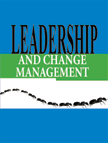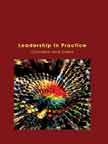KickStart: A Business Model to Tackle Poverty
|
|
ICMR HOME | Case Studies Collection
Case Details:
Case Code : LDEN068
Case Length : 17 Pages
Period : 1991-2009
Pub Date : 2010
Teaching Note : Available
Organization : KickStart International, Inc.
Industry : Social Entrepreneurship
Countries : Kenya
To download KickStart: A Business Model to Tackle Poverty case study
(Case Code: LDEN068) click on the button below, and select the case from the list of
available cases:


Price:
For delivery in electronic format: Rs. 400;
For delivery through courier (within India): Rs. 400 + Shipping & Handling Charges extra
»
Leadership and Entrepreneurship Case Studies
» Short Case Studies
» View Detailed Pricing Info
» How To Order This Case
» Business Case Studies
» Case Studies by Area
» Case Studies by Industry
» Case Studies by Company
Please note:
This case study was compiled from published sources, and is intended to be used as a basis for class discussion. It is not intended to illustrate either effective or ineffective handling of a management situation. Nor is it a primary information source.
Chat with us

Please leave your feedback

|
|




<< Previous
Introduction Contd...
The results have been phenomenal since we launched that new
message -- an 800 percent increase in sales."4
KickStart was founded in Kenya in 1991 by Martin Fisher and Nick Moon (Moon), two visionary social entrepreneurs. In an innovative approach to fighting poverty, they sought to develop tools and technologies that could be utilized by entrepreneurial poor people to establish small businesses, earn a steady income and eventually overcome poverty.
|

|
Initially, KickStart developed low-tech devices like a soil block press for making low-cost building blocks and an oil seed press for extracting cooking oil.
Later, they developed and introduced the MoneyMaker Pumps, a series of hand and foot-operated water pumps that could irrigate about 1 to 2 acres of land and cost between US$ 35 and US$ 100. One of the unique aspects of KickStart was that in spite of being a non-profit organization, it did not give handouts.
Instead, it sold its various devices to the poor, to create a sustainable and profitable private-sector supply chain for its devices. Moreover, the organization operated under the assumption that people were more likely to use and maintain the devices if they were purchased with their hard-earned money...
Excerpts
>>

|
|










